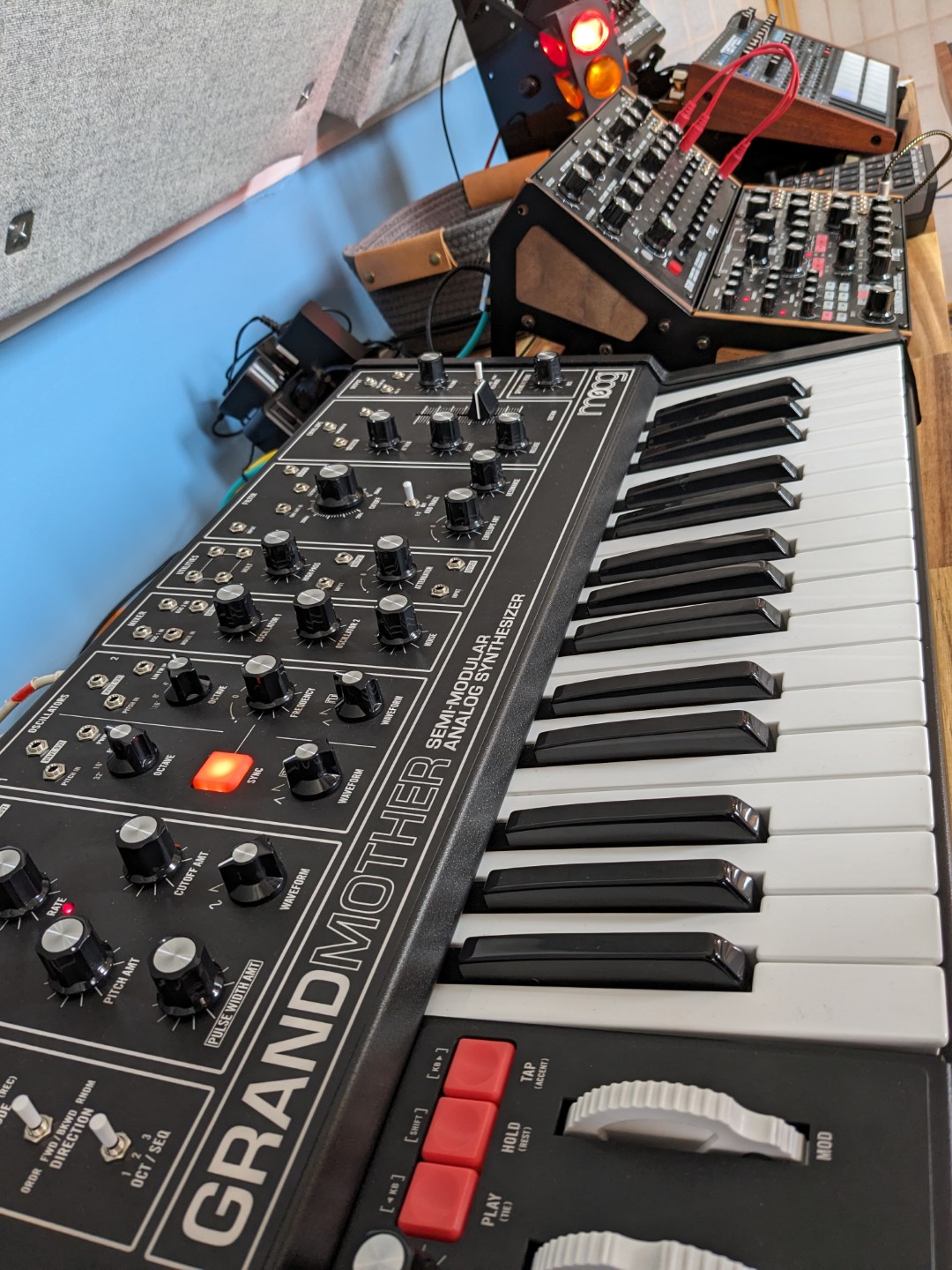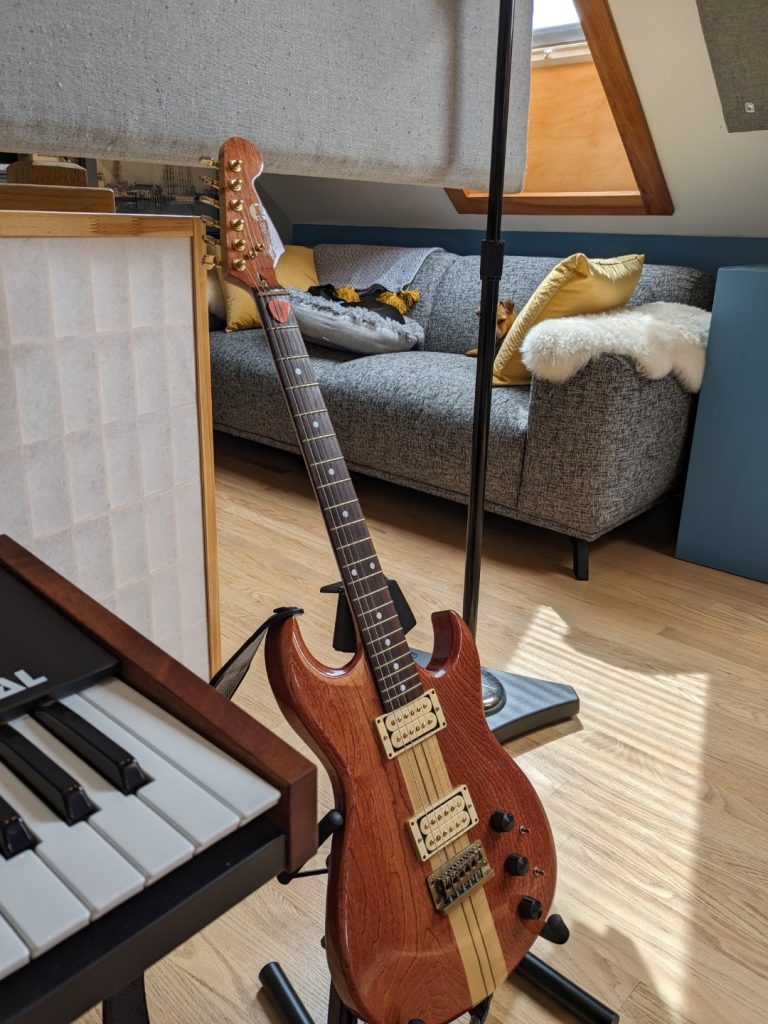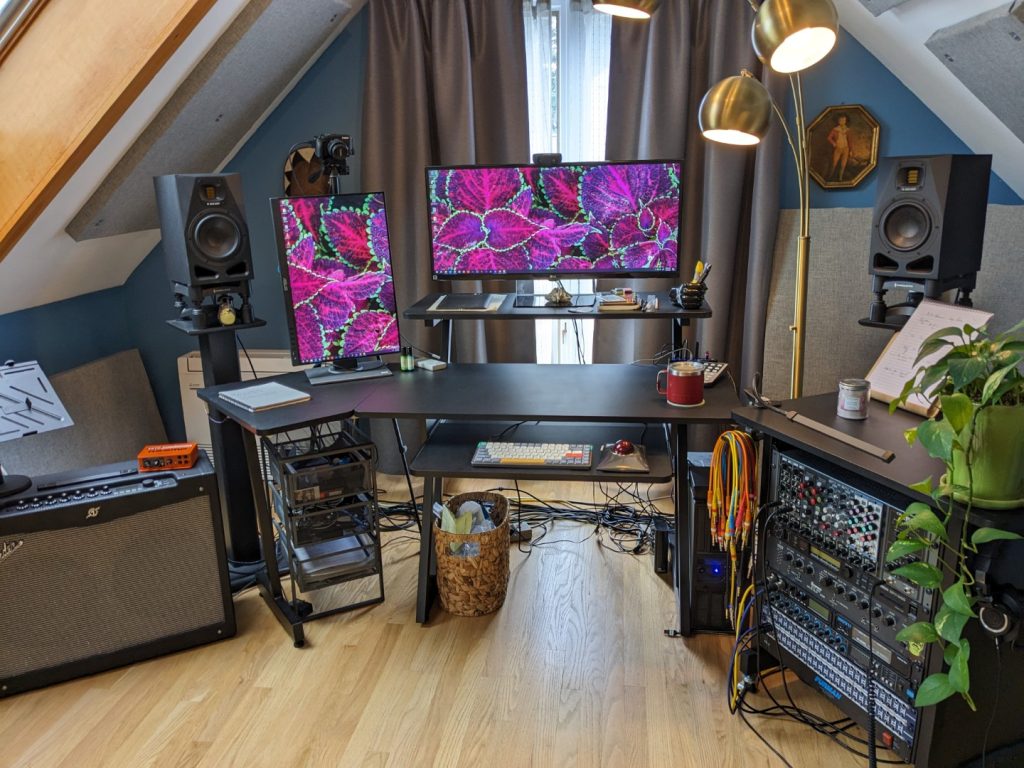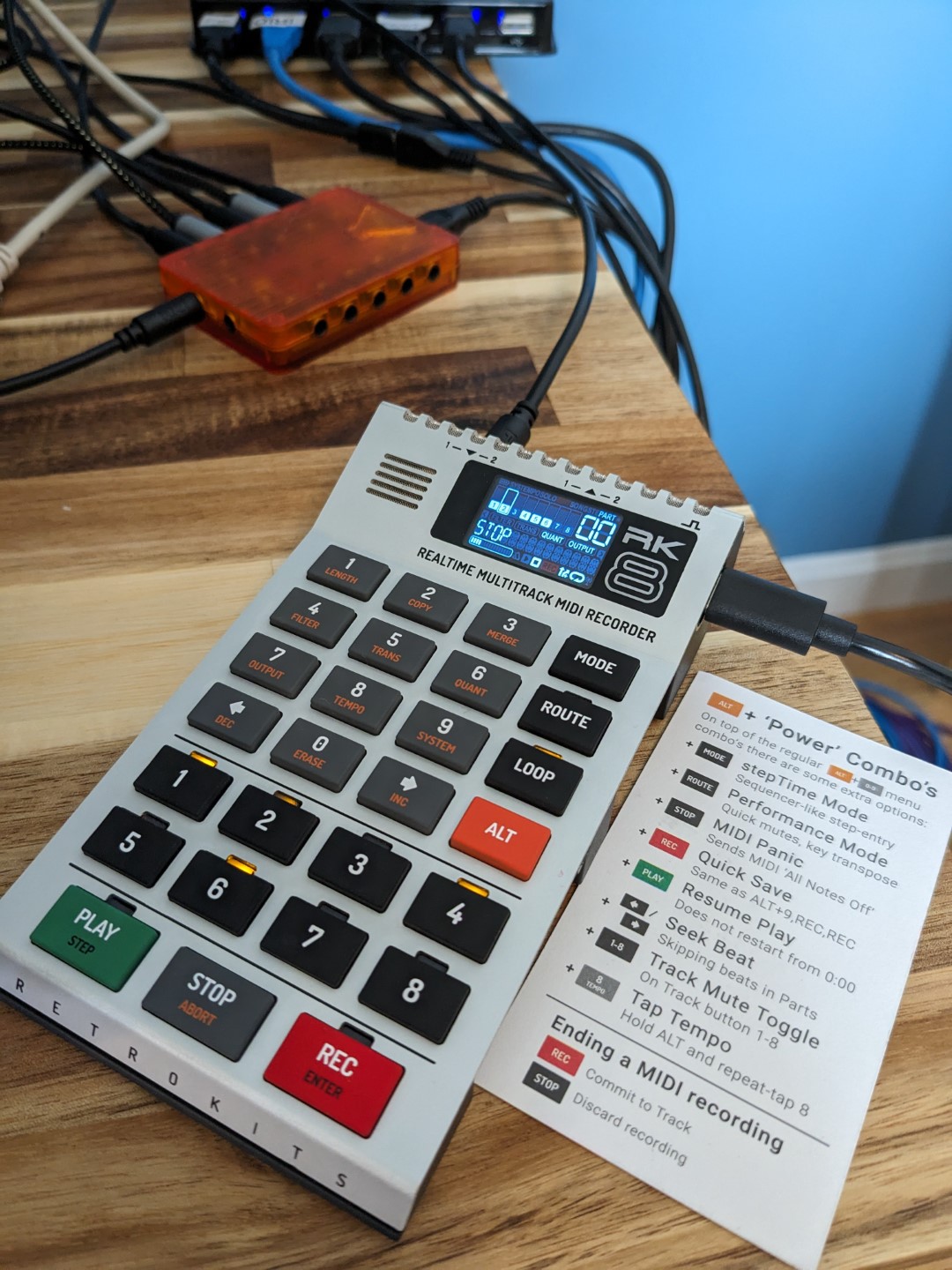After focusing on the Blix Byrd show that happened last weekend at Nova Arts, I’m now able to turn my attention to future music-making. Because that show featured tracks from the last Blix Byrd album, which was very much a super-crafted studio creation, it was tough to put it together in a way that made sense. I’ll post some video soon so you can judge for yourself how it worked. (Thanks a bajillion to Greg Wilder for making it way better with his mad scientist brain and insane keyboard skillz!!)
But the experience made me re-evaluate how I want to make music — and after 12 years of not performing/rehearsing, I was reminded how important real-time music creation is. Without it, you miss some of the best parts of making music. And I realized that I want performing to be part of the process from top to bottom. To that end, I’ve got my studio all re-set for my next round of projects.
DAW-less, bay-beeee!
The impetus for this re-vamp, which involves just a couple of new pieces of gear, was to cut out the computer from the process until everything is sounding great, and audio is ready to be recorded in very large chunks. So, it’s a bit of a back-to-the-past approach, when the DAW was used as a tape machine instead of a composition tool. There are a few reasons for this:
- Sitting at the computer and moving things around is sooo tedious, and like most millennials, it’s what I do for work, so I like to stay away from it for large stretches of time.
- My brain seems to operate differently when interacting with a computer vs. a musical instrument — it’s not necessarily worse or better, but the two types of tools live in a very different mental space for me. This means that my brain is switching modes constantly, which puts up a barrier to the necessary flow state that’s required for good music-making.
- Working in a DAW provides too much opportunity to get in the weeds, which is something I’m absolutely wont to do.
- I love knobs, keys, faders, and buttons. Which is probably obvious if you look at the pictures.
So I give you my DAW-less setup! Er, DAW-less ’til the very end, when I use the DAW to record audio, mix and master. Let’s not throw the baby out with the bathwater here.






Current In-Studio Instrument List
- Prophet Rev-2
- Yamaha Reface CP (cause I can’t live without the EPs)
- Waldorf Iridium
- Waldorf STVC
- Moog Grandmother
- Moog DFAM
- Moog Subharmonicon
- Moog Mavis
- Erica Synths Bassline DB-01
- DSI Tempest
- Roland SP-404 mk II
- AKAI EWI 3020m (incredible electronic wind instrument + analog synth from the 70s. Now much more accessible to me!)
- Eagle electric guitar (early 80s Fujigen guitar…UNBELIEVABLE weirdo one-off guitar that someone put a ton of love into)
- Gibson Les Paul Studio
- Not pictured: a pedalboard full of goodies
- A rack full o’ sound-juicing goodies
How It All Fits Together
- All instruments/effects are running through two patchbays in my rack so that they’re available to go anywhere. Almost all synths are normalled to ADAT channels. Because I have a Cranborne Audio interface that doesn’t have its own software, I do have to have a DAW open to monitor the synths, unless I’m patching them to the 500-series gear in the Cranborne, which is available through its on-board monitoring system.
- All MIDI-capable instruments are running into the Retrokits RK-006, which is a 10-port MIDI/USB/Gate hub. I’m running it in standalone mode, although if I decide to use MIDI via the DAW at any point, it will handle that as well, so I don’t have to re-cable. I do have some outstanding questions about how it handles USB MIDI, but it’s such an obviously great idea/form factor, and the implementation is absolutely workable.
- The RK-006 is hooked up to the Retrokits RK-008, an absolutely brilliant piece of kit brought to my attention by @Jyoti on Mastodon. It’s a multi-track MIDI recorder/sequencer that emulates the famous Alesis MMT8, which I’ve never used but many, many people swear by. (They’re dead now, though.) I’ve put in 2-3 hours with it so far, and I’ve already got the hang of it and am making better music with it than I ever did with my (now sold!) Akai Force. It’s so simple, it clocks brilliantly, and it’s darned fun to use. I could see myself buying a more feature-rich sequencer (like a Squarp Hapax) at some point, assuming this way of making music is as fun as I think it will be, but this one does the basics VERY well, without a lot of fuss!
Outstanding Questions
- When exactly will I move from MIDI sequences to audio-land? I haven’t worked much with “Parts” in the RK-008 yet, which are its way of tackling form. Assuming it’s as intuitive as everything else, I may try to create an entire, perform-able version of a song in MIDI/live audio before hitting the DAW.
- How much will I use the SP-404 for finished audio? I’m really enjoying using it to trigger samples, although I’m not in love with its pattern sequencer. (But RK-008 to the rescue, amirite?!). That said, I don’t think I want “real” vocals and guitars to be recorded there. So there will certainly be some tape machine-style audio takes happening. My current thought — if I’m singing/playing something loop-y, I’ll use the sampler and/or looping pedal. If I’m going to through-perform a part, I’ll just record it straight to the DAW, of course.
- When will I use my outboard gear for its sonic magic? Will I patch things through it while sequencing, or use it mostly as a mixing tool? (I suspect both will happen.) I also have a Softube Console 1 + Fader that gives me 10 channels of faders and a really nice console emulation. (I like their Neve clone and used it on everything on IX.) I think I may set that up on the input channels in my DAW, where I’ll be monitoring most things, so that when I record everything, it already has some scultping/sonic magic going on. Then I’ll use my outboard compressors/EQs/etc. during mixing.
I really couldn’t be more excited about this setup! The few hours I spent making music as I tested everything were an absolute blast, and once I get used to the workflow, I think it will be insanely fun. Here’s to live music-making!!